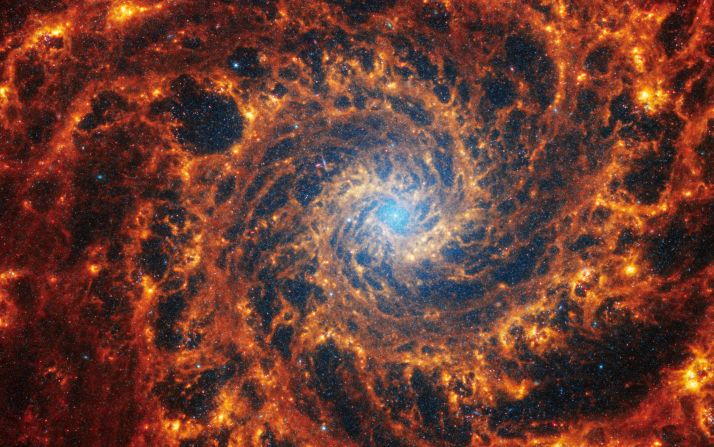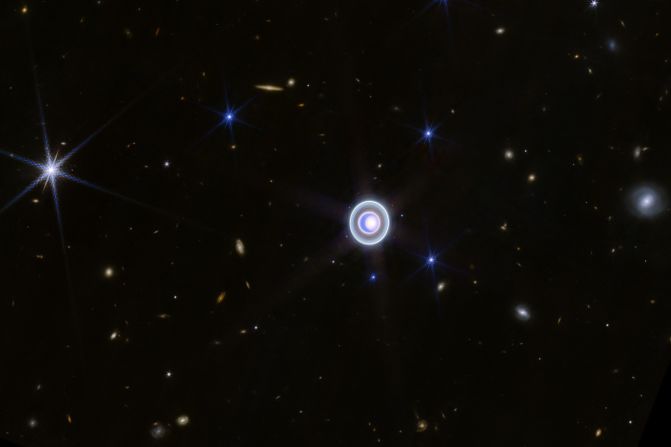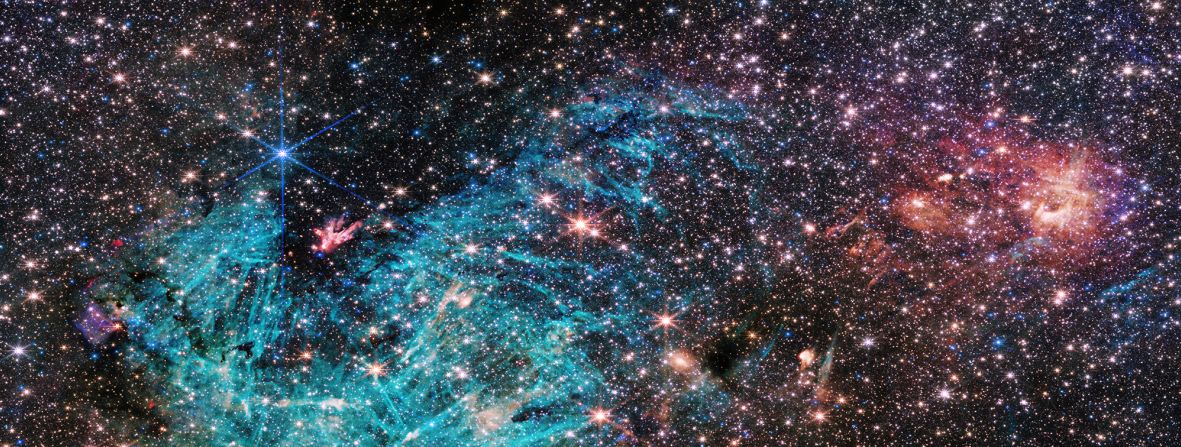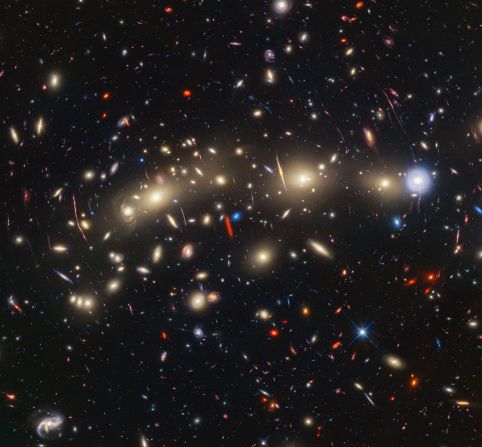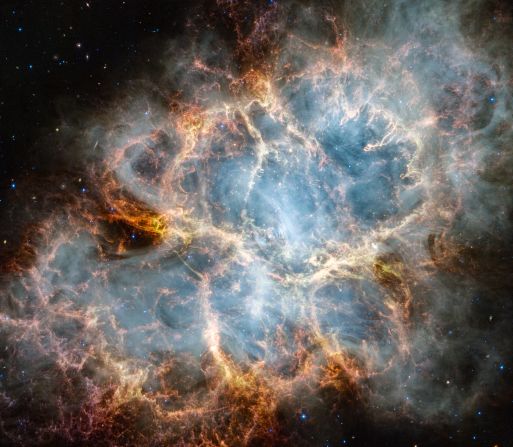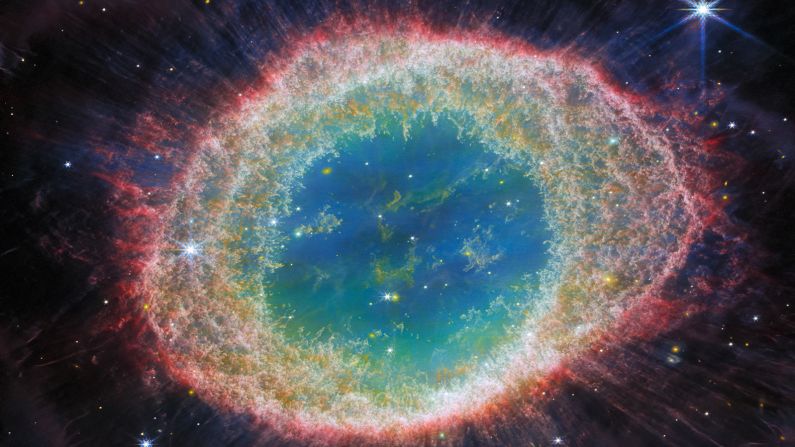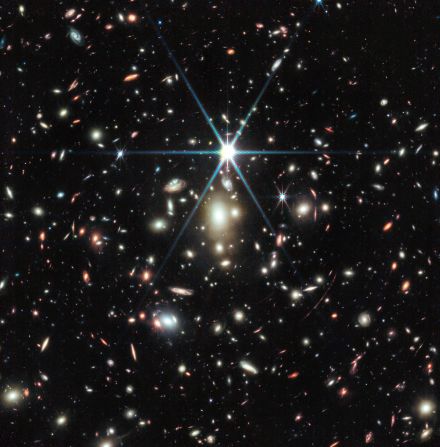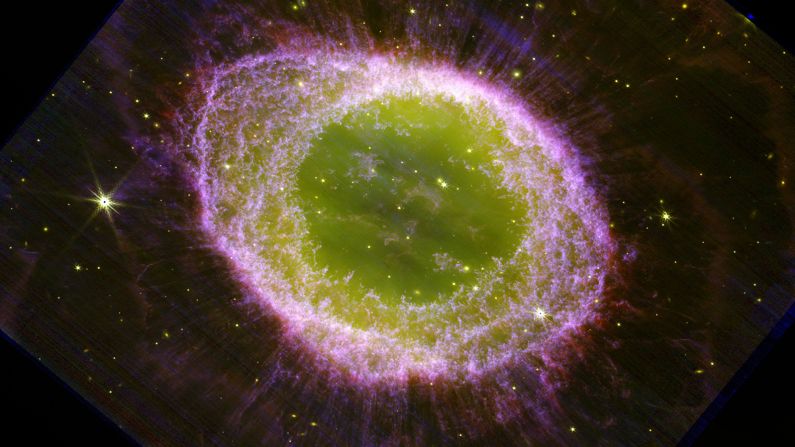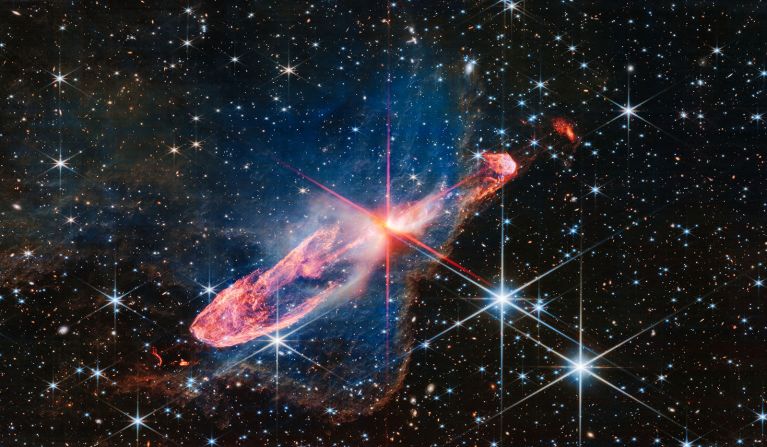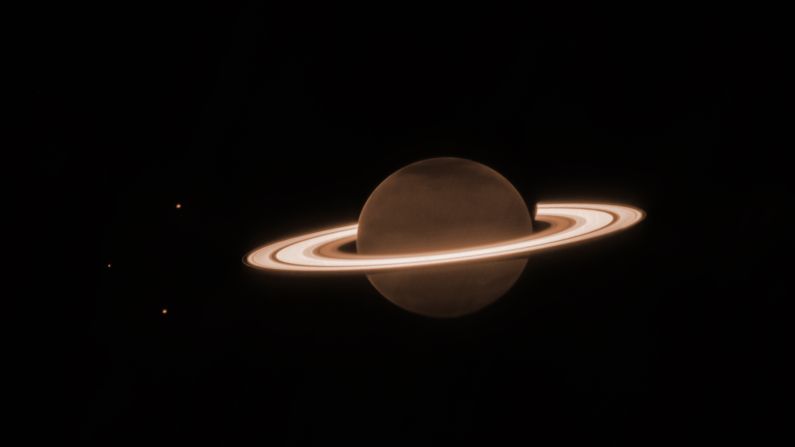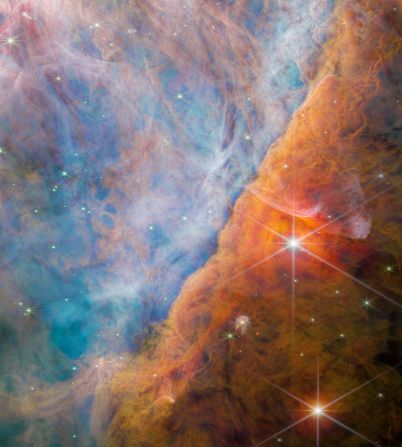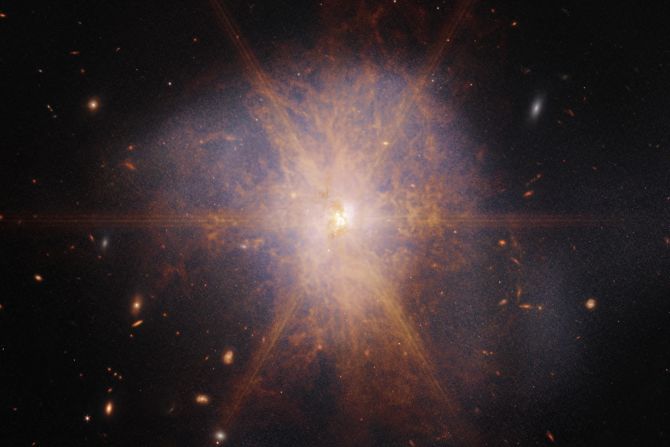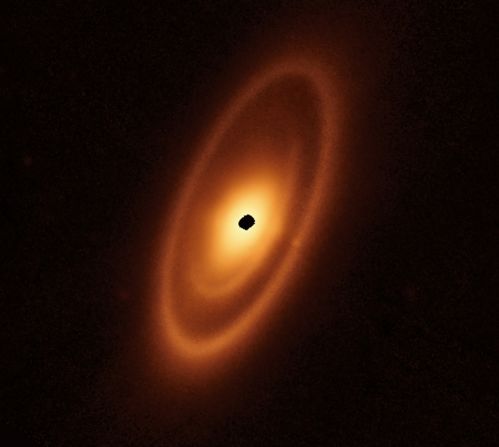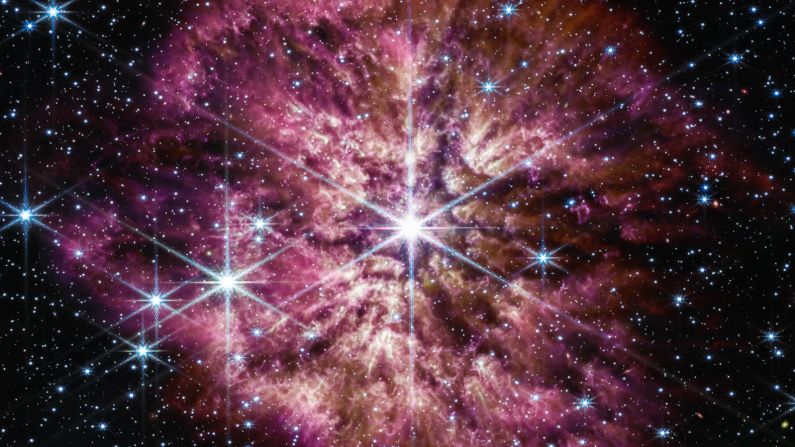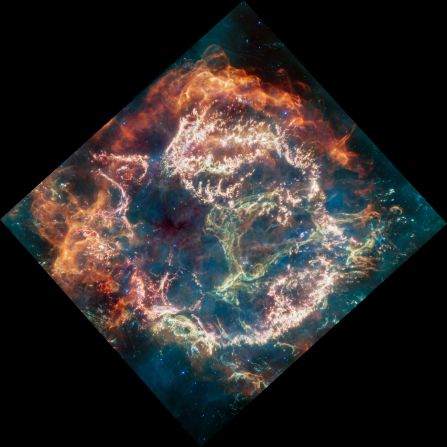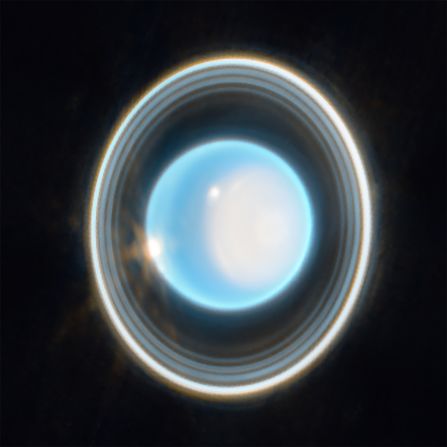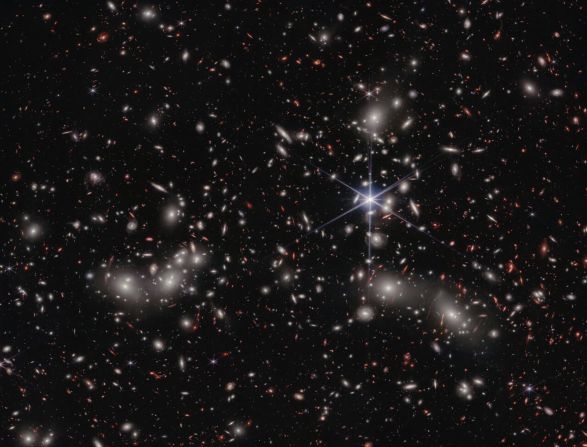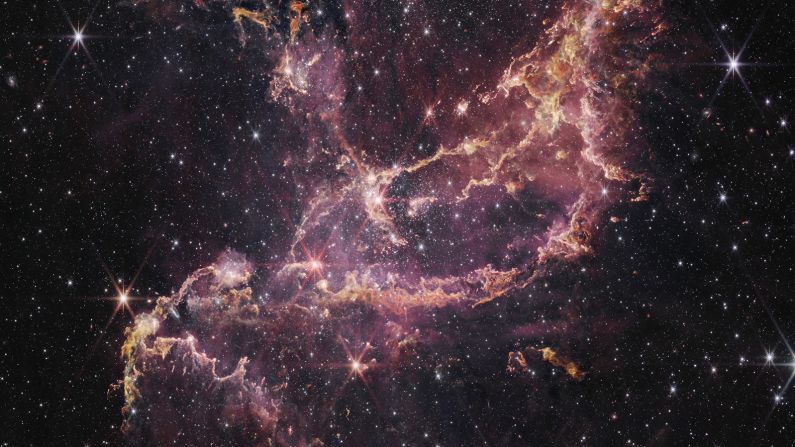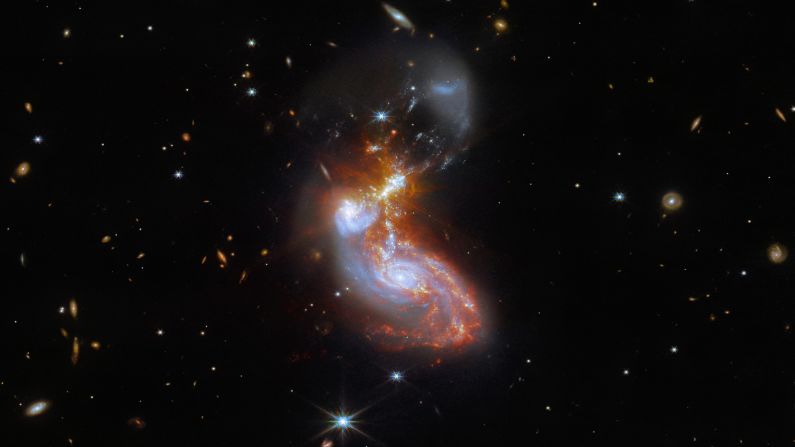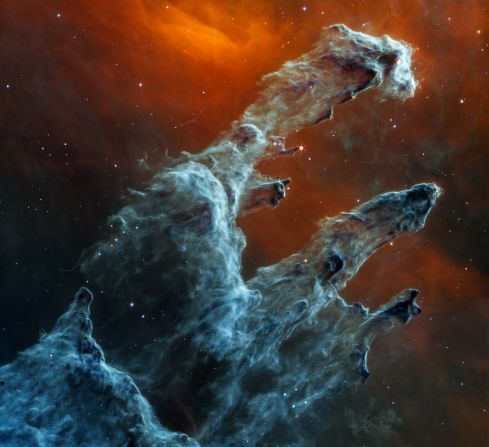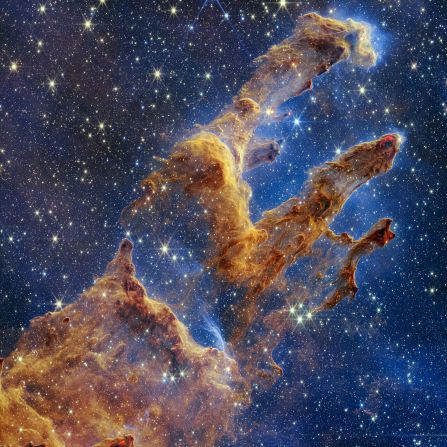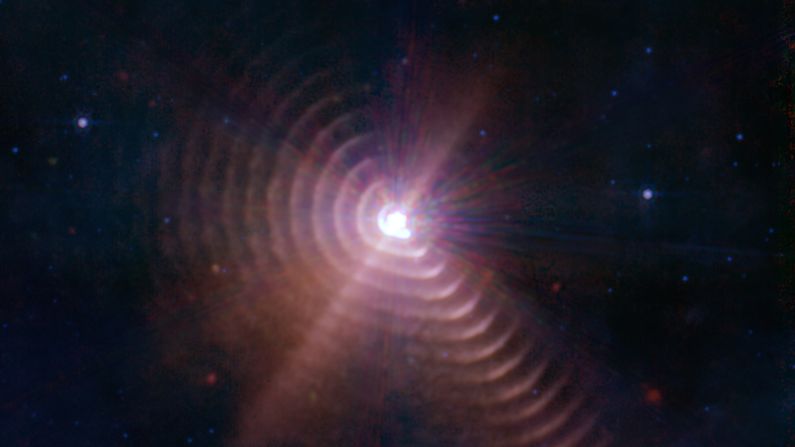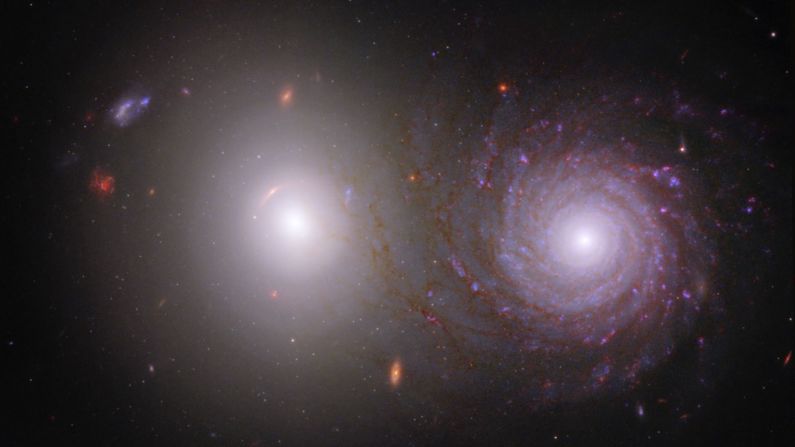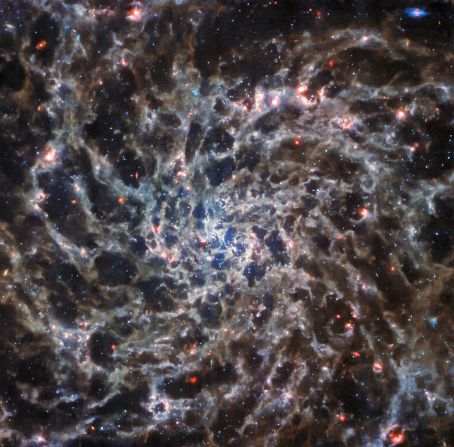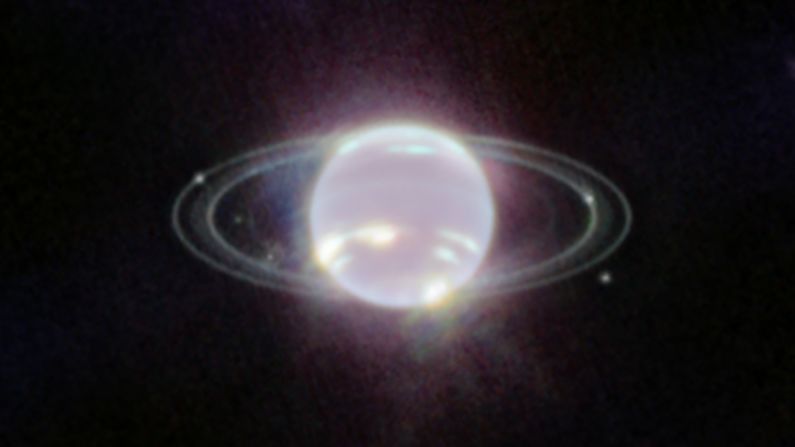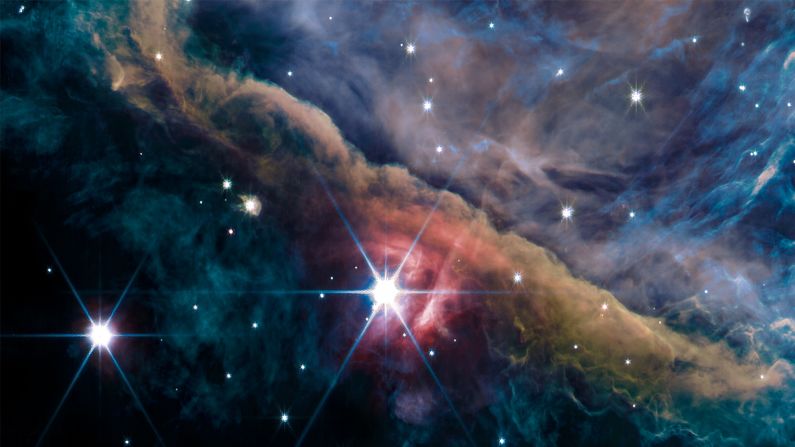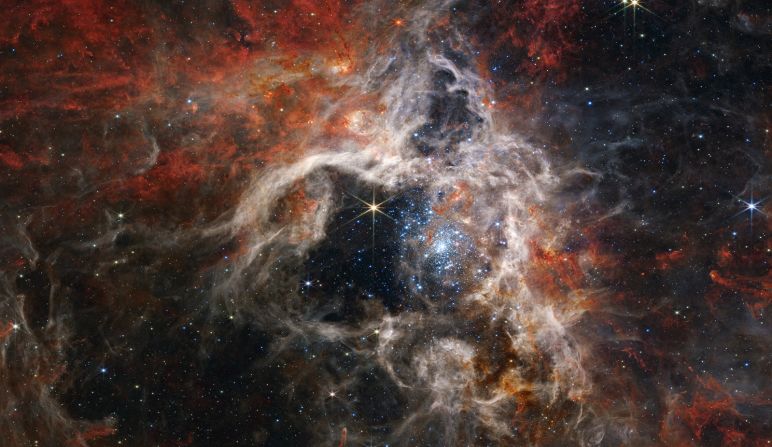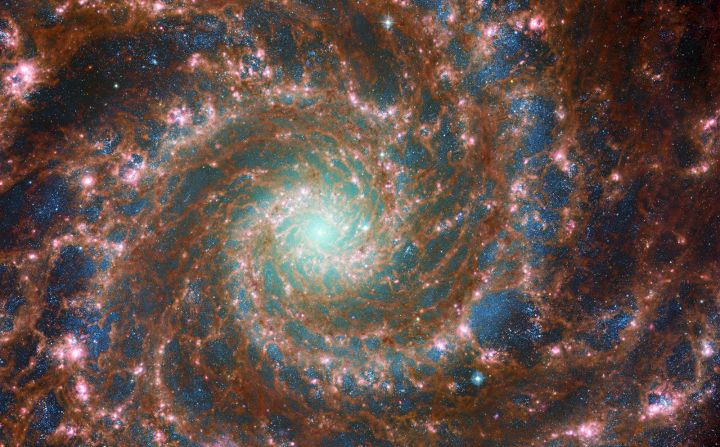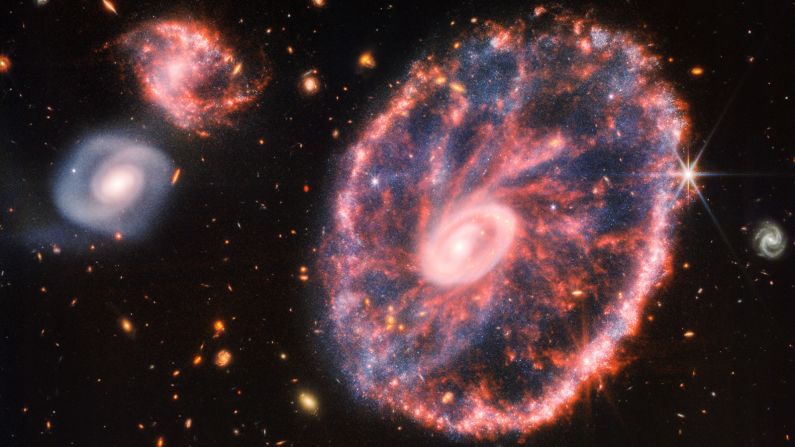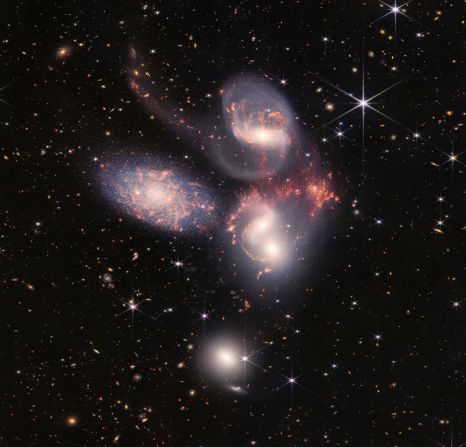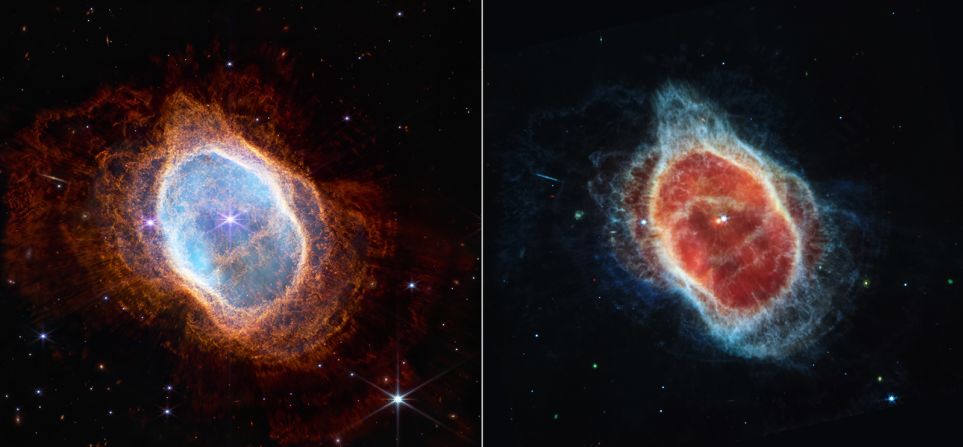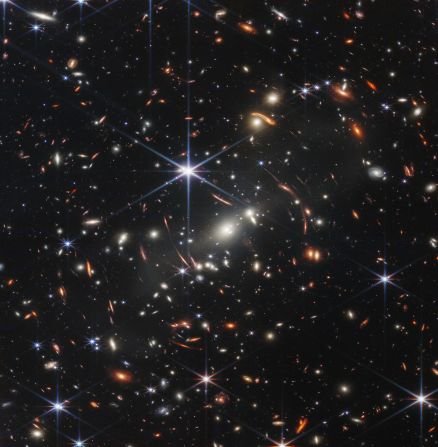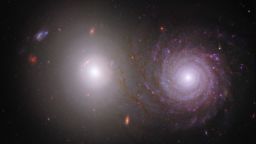Sign up for CNN’s Wonder Theory science newsletter. Explore the universe with news on fascinating discoveries, scientific advancements and more.
A new image captured by the James Webb Space Telescope shows rings of dust plumes created by the violent interactions between two stars.
The image is part of new research that reveals how intense starlight can push matter around in space by focusing on a double-star system located 5,000 light-years away from Earth in the Cygnus constellation.
The star system, called WR140, includes a Wolf-Rayet star and a blue supergiant star swirling around one another in an orbit that takes eight years to complete. The blue supergiant is an O-type star, one of the most massive star types known. Only some massive stars evolve into a Wolf-Rayet as they approach the end of their life cycle. This stage lasts a few hundred thousand years.

Astronomers have observed the binary star system for two decades using the W.M. Keck Observatory in Hawaii.
Every eight years when the stars come close together, they release dust plumes that stretch thousands of times the distance between Earth and the sun. Researchers observed the plumes to measure how starlight can impact matter for their study published in the journal Nature on Wednesday.
Light can exert a type of momentum called radiation pressure on matter, but it’s difficult to spot in space.
“It’s hard to see starlight causing acceleration because the force fades with distance, and other forces quickly take over,” said first study author Yinuo Han, doctoral student at the University of Cambridge’s Institute of Astronomy in the United Kingdom, in a statement.
“To witness acceleration at the level that it becomes measurable, the material needs to be reasonably close to the star or the source of the radiation pressure needs to be extra strong. WR140 is a binary star whose ferocious radiation field supercharges these effects, placing them within reach of our high-precision data.”
All stars generate their own stellar wind, or streams of gas blown out into space, but massive Wolf-Rayet stars can whip up winds into something more akin to a stellar hurricane. Wolf-Rayet stars in later stages of their life cycle have blown off their hydrogen layer. Hydrogen can’t form dust on its own, but other elements located in a star’s interior, like carbon, can.
Carbon condenses into sooty dust in the rapidly whirling wind, which glows in infrared light that is invisible to the human eye. But telescopes can spot this warm, glowing light.
The team’s observations revealed that the dust plumes form where the stellar winds from both of the giant stars collide, creating a cone-shaped shock front between the stars.
As the stars go through their oval-shaped orbit, the shock front also moves, which causes the smoke-like dust plume to spiral. If the stars had a circular orbit, it would form a pinwheel pattern. Instead, the oval-shaped orbit creates delays in dust production that cause the dust plumes to resemble rings or shells.
The end result resembles an uneven bull’s-eye or something that looks like a spiderweb.

The Webb telescope was able to peer much deeper into the binary star system than ground-based telescopes and observed almost 20 accelerating dust plumes nested inside each other.
“There seemed to be a strange-looking diffraction pattern, and I worried that it was a visual effect created by the stars’ extreme brightness,” said study author Ryan Lau, principal investigator of the Webb Early Release Science program and assistant astronomer at the National Science Foundation’s NOIRLab, in a NASA release.
“However, as soon as I downloaded the final data I realized that I was not looking at a diffraction pattern, but instead rings of dust surrounding WR 140 — at least 17 of them.”
The journal Nature Astronomy published the results of the Webb observation on Wednesday.
“Like clockwork, this star puffs out sculpted smoke rings every eight years, with all this wonderful physics written then inflated in the wind like a banner for us to read,” said study coauthor Peter Tuthill, a professor at the School of Physics at The University of Sydney, in a statement.
“Eight years later as the binary returns in its orbit, another appears the same as the one before, streaming out into space inside the bubble of the previous one, like a set of giant nested Russian dolls.”
The predictable production of a dust plume every eight years in the star system provided researchers with the perfect target to study the expansion rate of each dust spiral. Rather than expanding a constant speed, they were observed accelerating.
“In one sense, we always knew this must be the reason for the outflow, but I never dreamed we’d be able to see the physics at work like this,” Tuthill said. “When I look at the data now, I see WR140’s plume unfurling like a giant sail made of dust. When it catches the photon wind streaming from the star, like a yacht catching a gust, it makes a sudden leap forward.”
Webb’s sensitivity will allow astronomers to make more observations of Wolf-Rayet stars and their intriguing physics in the future, according to the study authors.





